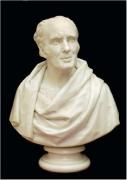|
|
||||||||||||||||||||||||
 |
Featured person
Recently added |
William Parkinson Wilson (1826 - 1874): |
||||||||||||||||||||||
William Wilson was a professor of mathematics who was interested especially in astronomy. Although he was born in England, and spent the larger part of his career in Australia, in Ulster he was notable for being the founder Professor of Mathematics at Queen’s College, Belfast (later Queen’s University), taking up this post in 1849; in his relatively short time there he was the principal driving force behind the College’s astronomical observatory.
Wilson was born in Peterborough, England, son of a silversmith. He was educated at the Cathedral Grammar School, Peterborough, where he won a sizarship (a monetary scholarship) to St John's College, Cambridge, where he matriculated in February 1843 gaining his BA in 1847 and his MA in 1850); he was a “senior wrangler” (that is, achieving the top average grade of those students who attain first class honours degrees), first Smith’s Prizeman, and Fellow of St John’s (1847-57). Queen’s College had been founded in 1845 as one of the three constituent colleges of the Queen’s University in Ireland. There had been some debate as to where to situate what was effectively the Queen’s College for Ulster, and the choice of Belfast was no foregone conclusion. Probably the principal competitor was Armagh, with its (for the time) extensive library of 11,000 volumes as well as an astronomical observatory which, very well equipped and led by one of the ablest astronomers of the time, Rev Thomas Romney Robinson, was second only to the Royal Observatory at Greenwich in the entire United Kingdom. Nevertheless, Belfast was eventually chosen for the new College, and funding for it from private benefaction gradually increased. One beneficiary of this was the astronomical observatory, which was largely Wilson’s brainchild and one which this most diligent of men pursued with enthusiasm and assiduity. Robinson in Armagh was very supportive of Wilson’s astronomical interests, and provided some important equipment for the Belfast observatory: an astronomical clock, a transit instrument, an achromatic telescope, and a night glass; the latter of these had originally been used at the observatory of Kew Gardens, London. The Royal Observatory itself provided a six-foot mural circle.
A fund was raised by a mixture of Queen’s College professors and local citizens which enabled the building of the College observatory in 1851 (it was constructed roughly where the Administration Building car park is located today, 2012). It had a revolving dome twenty feet in diameter, which could accommodate a large equatorial telescope. Although this never materialised, nor did funding for a full-time astronomer (it was hoped that the Belfast Harbour Commission might provide this, astronomical study having obvious maritime benefits); nevertheless, with Wilson’s enthusiasm and the instruments already acquired, astronomical study did flourish at Queen’s, though Wilson’s departure in 1854 for Australia dealt rather a body blow to the field, and the observatory fell into disuse.
Wilson himself was chosen in 1854 as one of the four foundation professors (in his case, pure and applied mathematics) of the University of Melbourne, where he arrived in January 1855, and wasted little time pursuing his interest in astronomy. Already in November 1856 he read a paper in London before the Philosophical Institute in which he advocated Melbourne as the site for the southern hemisphere observatory so long planned by The Royal Society; a committee was formed to try to persuade the government to achieve what Wilson called the “noble object”. In June 1858 he demonstrated a model of a four-foot diameter reflector telescope for the proposed Melbourne observatory, which opened in 1863. In December 1871 he was in charge of the small equatorial telescope of the expedition which set out to observe the eclipse of the sun off Cape Sidmouth, Queensland. He also established an observatory at Mornington, south of Melbourne as part of the observations of the transit of Venus on 9 December 1874.
Besides astronomy, Wilson was an active an versatile teacher, giving courses in Euclid, trigonometry, algebra, analytical geometry and calculus; he also taught in the BA course natural philosophy which he illustrated by models and experiments; in a two-year course he lectured on mechanics, hydrostatics, pneumatics, heat, meteorology, optics, astronomy, electricity and magnetism, and set and corrected the matriculation papers in mathematics. In 1858 he devised the first engineering course at an Australian university and the three-year course leading to a certificate of civil engineering was begun in 1861.
Shortly after writing a report on the observations of the transit of Venus, he died of apoplexy at the age of 48.
| Born: | 1826 |
| Died: | 1874 |
| Richard Froggatt |
| Acknowledgements: Professor Sir Peter Froggatt |
| Bibliography: TW Moody & JC Beckett: Queen’s Belfast 1845-1949; the History of a University; Australian Dictionary of Biography |


Home | Our Policies | Plaques | Browse | Search | Sponsors | Links | Help | Contact
Privacy & Disclaimer | Cookie Policy | Site Map | Website Design By K-Point
© 2024 Ulster History Circle









